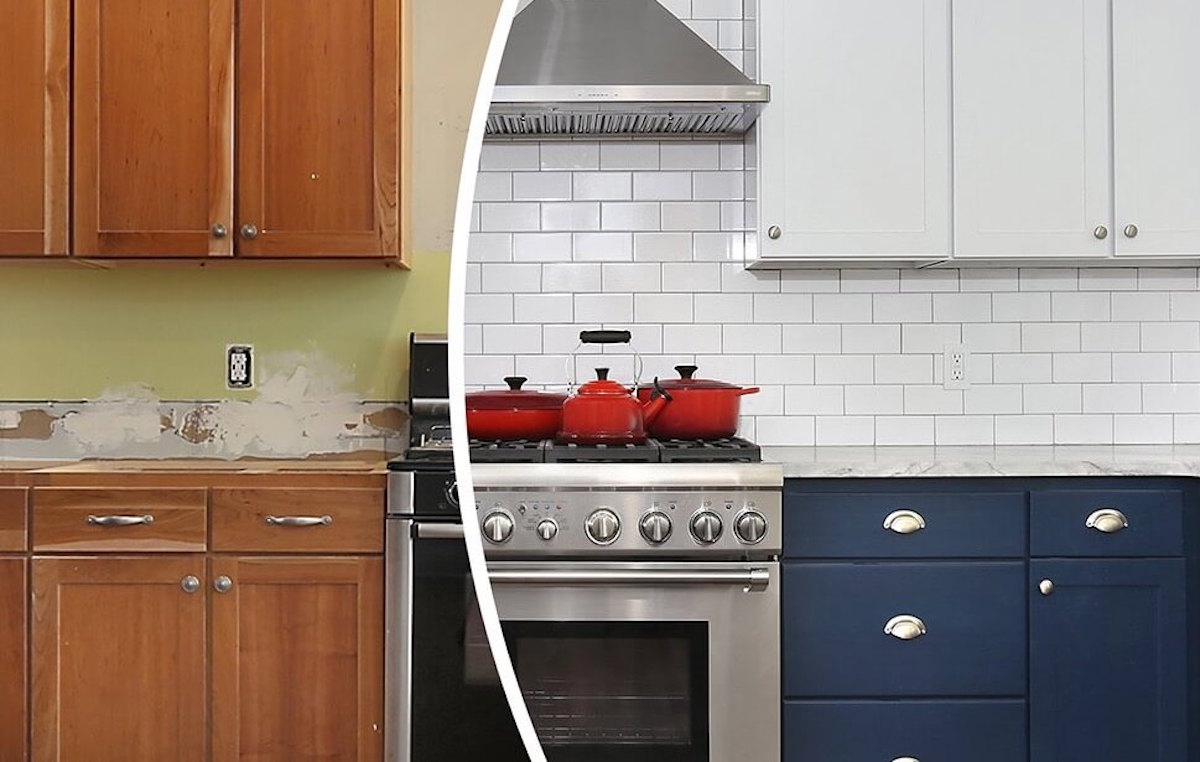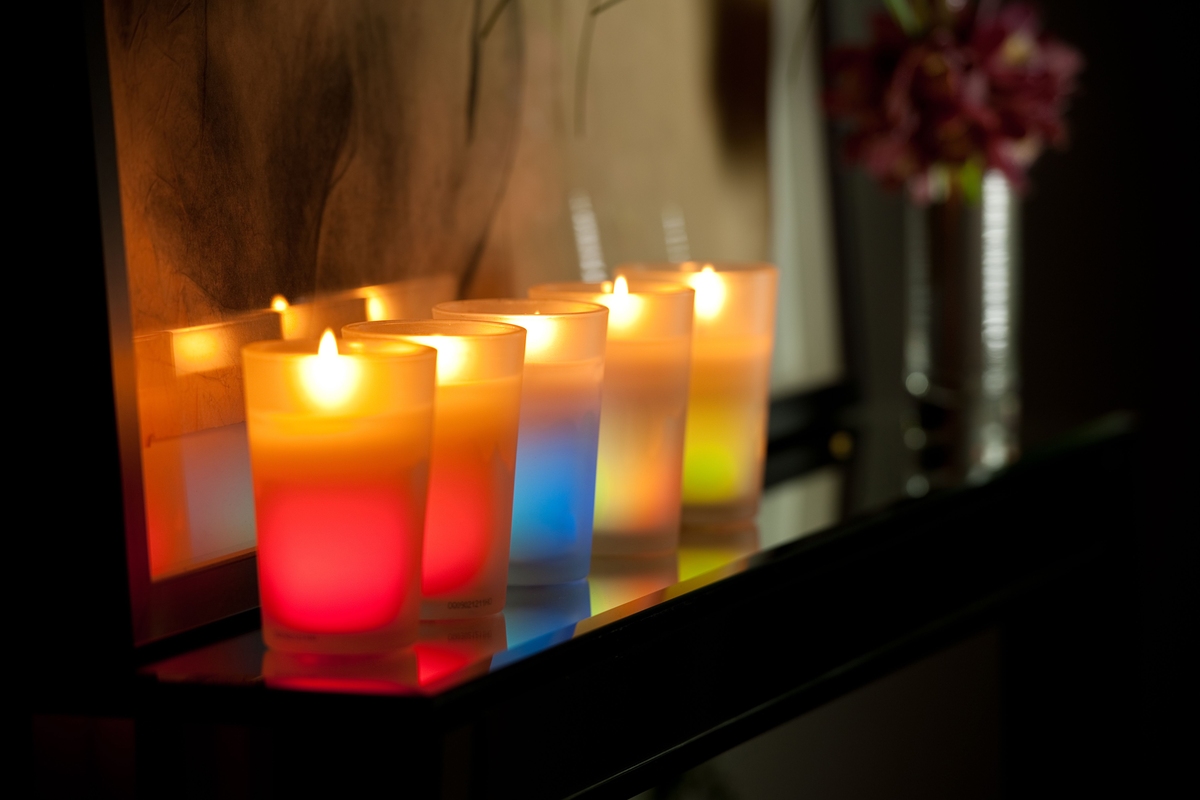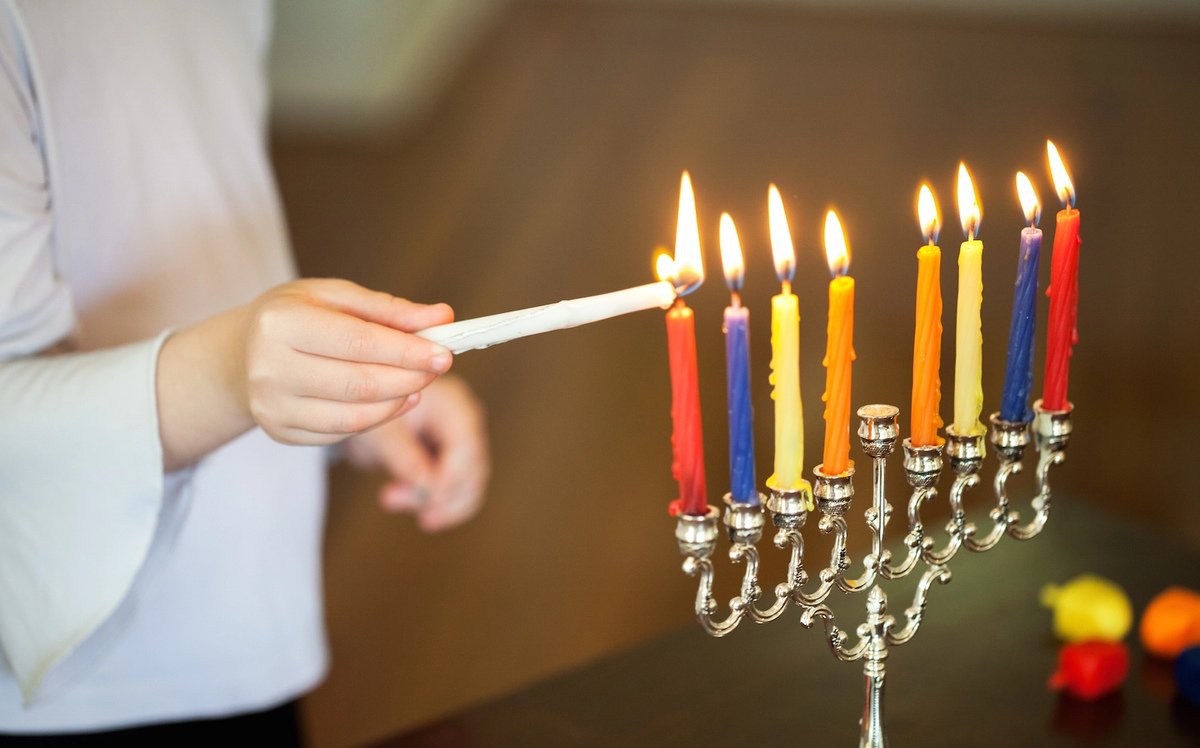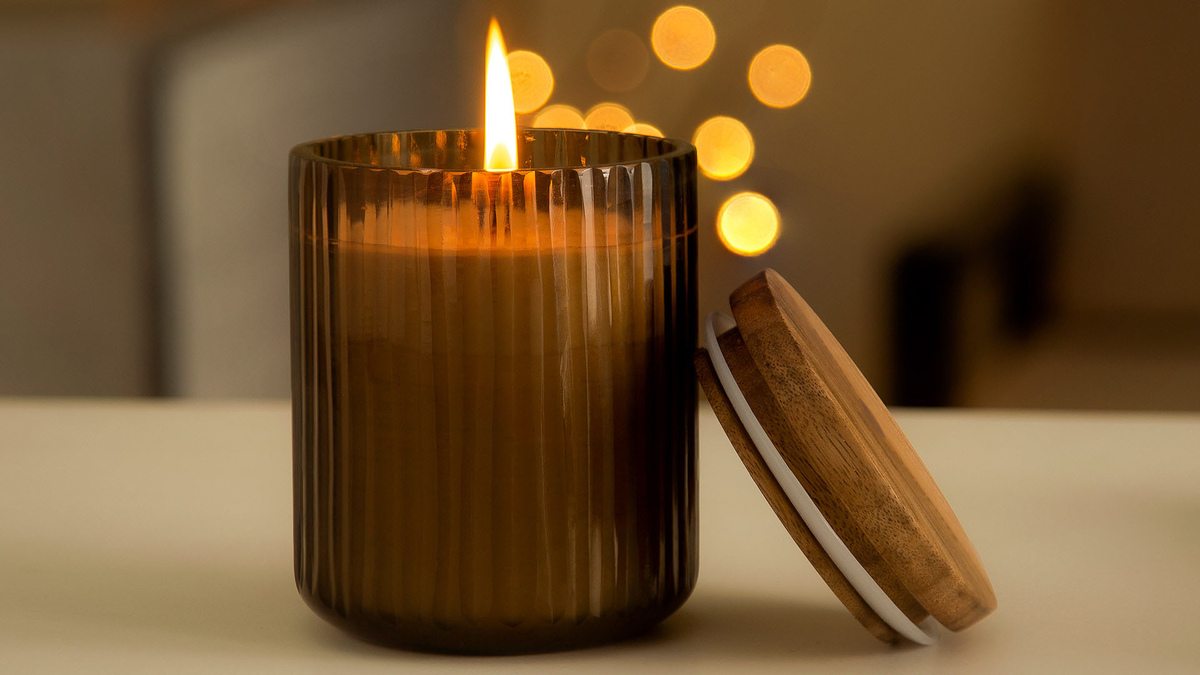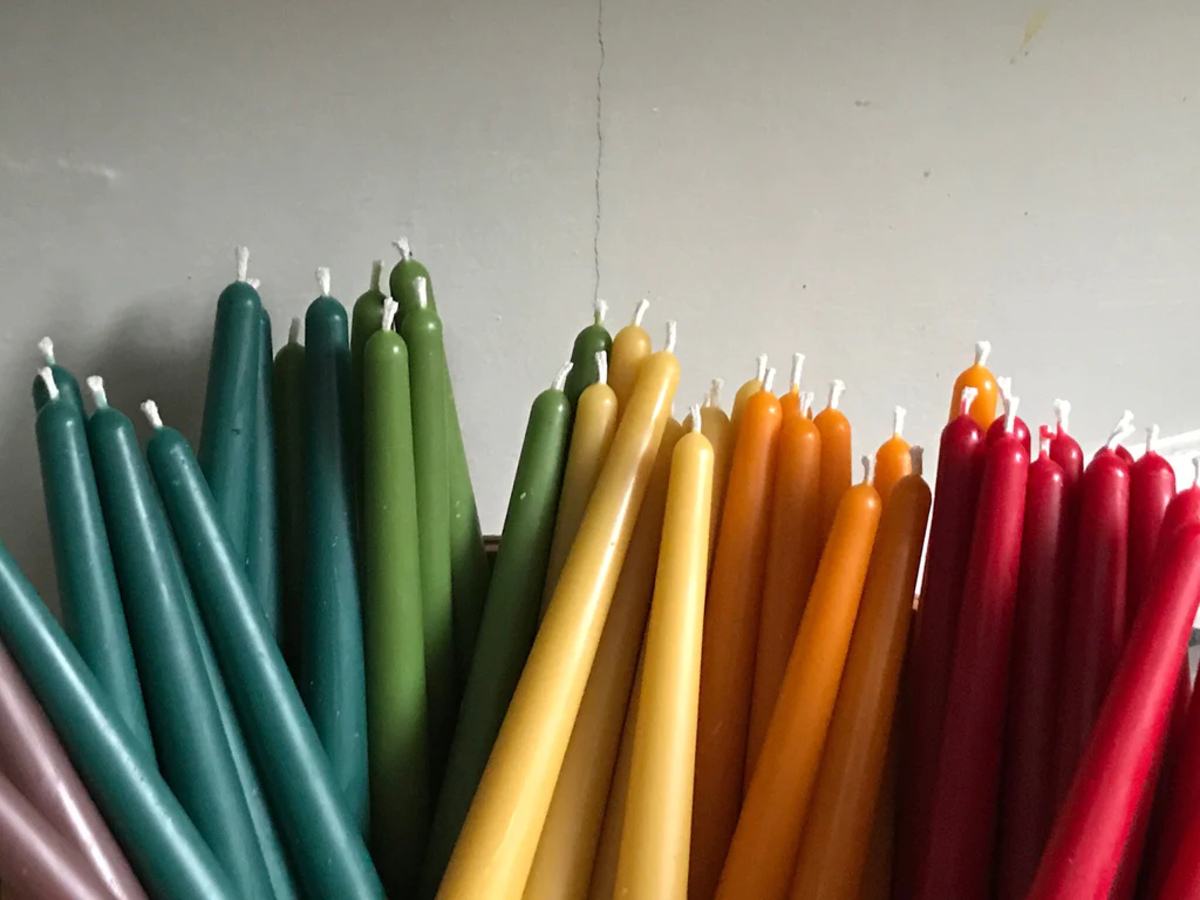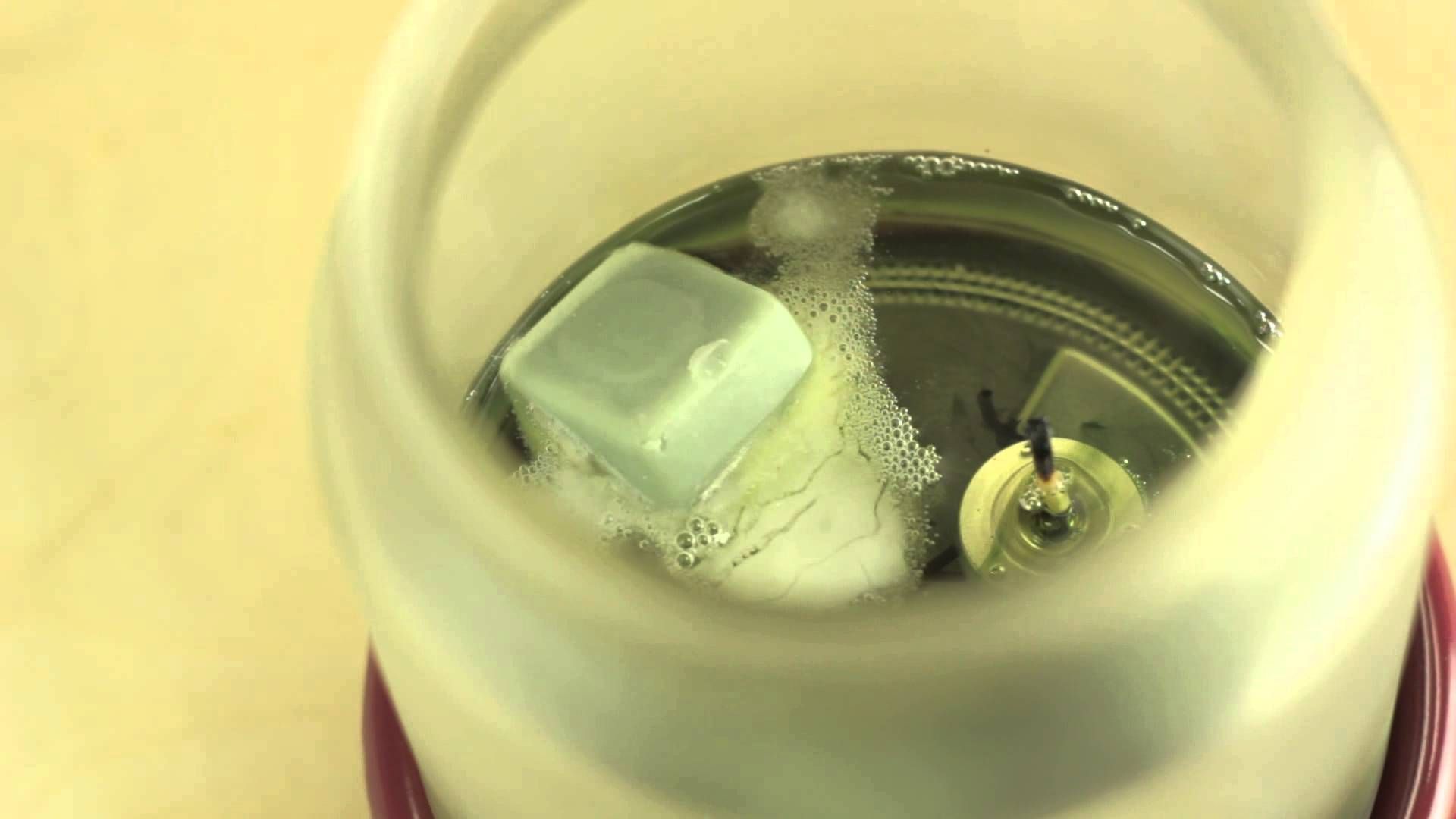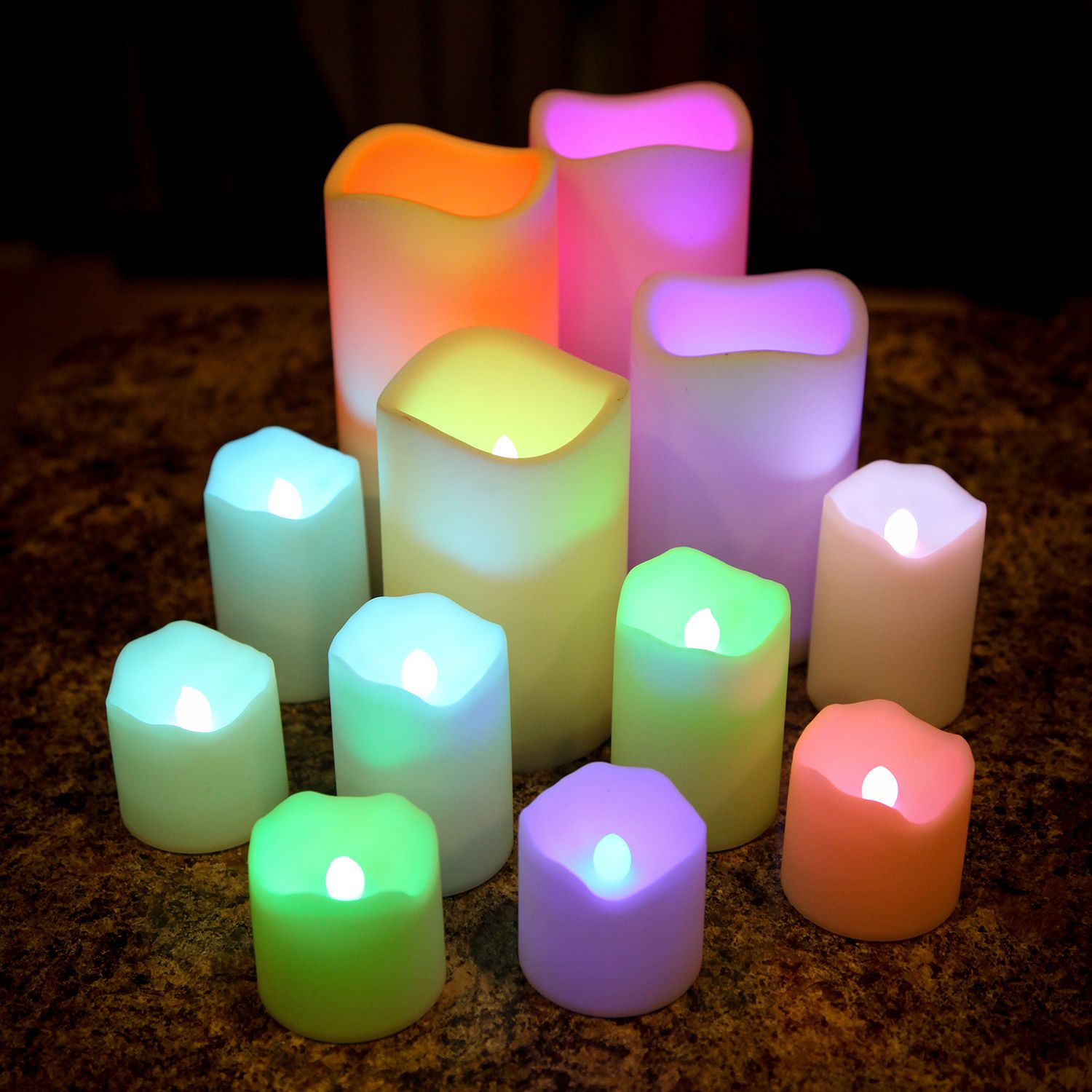

Articles
How Do Color Changing Candles Work
Modified: August 27, 2024
Discover the fascinating science behind color changing candles in this informative article. Learn how they work and the secrets behind their captivating transformation.
(Many of the links in this article redirect to a specific reviewed product. Your purchase of these products through affiliate links helps to generate commission for Storables.com, at no extra cost. Learn more)
Introduction
Welcome to the fascinating world of color changing candles! These unique and captivating creations have captured the attention of many, adding an element of wonder and excitement to any environment. But have you ever wondered how these candles work their magic? In this article, we will dive into the intriguing world of color changing candles and explore the mechanisms behind their mesmerizing transformations.
Color changing candles are a marvelous innovation that combines artistry and science. They are not just your ordinary candles; they possess the extraordinary ability to change colors as they burn. This captivating feature has made them a popular choice for various occasions, from creating a relaxing ambiance at home to adding an enchanting touch to weddings and events. Let’s explore the mechanics behind their magical transformation and discover the different types of color changing candles available today.
There are two main types of color changing candles: temperature-sensitive and light-sensitive. Each type utilizes different mechanisms to produce their mesmerizing color transformations. Temperature-sensitive candles change colors based on the heat generated from the flame, while light-sensitive candles shift hues in response to changes in the lighting conditions. Let’s delve into each type and understand how they create their stunning visual effects.
Understanding the inner workings of color changing candles requires some knowledge of the underlying chemical reactions. The color change is a result of the interaction between the candle’s wax and various substances, such as pigments or dyes, that are mixed into the wax. These substances undergo transformations when exposed to specific stimuli, resulting in a visually striking display of colors. We will explore these chemical reactions and their impact on the color changing candle experience.
Color changing candles have made a significant impact by bringing a sense of magic and intrigue into our lives. They offer a unique and creative way to transform the ambiance of a space and create a mesmerizing visual spectacle. From creating a soothing and relaxing atmosphere to adding a touch of whimsy to special occasions, these candles have become a staple in many households and events. Join us on this journey as we unravel the mysteries behind these beautiful and captivating creations.
Key Takeaways:
- Color changing candles, whether temperature-sensitive or light-sensitive, create a mesmerizing visual experience through the use of thermochromic pigments and photochromic dyes, adding a touch of magic and wonder to any space.
- These captivating candles have a profound impact on our environment and well-being, offering a multi-sensory experience that enhances our senses and evokes emotions, making them a unique and enchanting addition to any setting.
Read more: Why Do Luminara Candles Stop Working
Overview of Color Changing Candles
Color changing candles are a delightful and innovative twist on traditional candles. They offer an enchanting experience as they illuminate a space with a kaleidoscope of colors. Whether you’re enjoying a quiet evening at home or celebrating a special occasion, color changing candles add an element of magic and charm.
These candles are available in various sizes, shapes, and styles, allowing you to find the perfect one to suit your personal taste and décor. From tapered candles to pillar candles and even tea lights, there’s a color changing candle for every occasion.
One of the key features that sets color changing candles apart is their ability to transition through different colors as they burn. This dynamic visual display is a result of the candle’s unique composition and the integration of temperature-sensitive or light-sensitive materials.
Color changing candles are often made from a combination of high-quality paraffin wax or soy wax, blended with special additives and pigments. These additives are responsible for the captivating color changes that occur while the candle is lit.
The color changing effect can be activated by either temperature or light. Temperature-sensitive color changing candles respond to the heat generated by the flame. As the flame burns and heats up the surrounding wax, the candle transitions through a spectrum of colors. On the other hand, light-sensitive color changing candles react to changes in the lighting conditions. When exposed to different light sources or intensities, these candles shift colors, creating a mesmerizing visual experience.
Whether you prefer a gradual transition of colors or a sudden burst of vibrant hues, there is a color changing candle that will meet your preferences. Some candles smoothly shift from one color to another, creating a beautiful gradient effect, while others change colors in distinct stages, adding an element of surprise to their transformation.
Color changing candles are not only visually appealing but also offer a delightful and soothing fragrance. They often come infused with aromatic oils, such as lavender, vanilla, or citrus, enhancing the overall sensory experience and creating a relaxing ambiance. The combination of captivating colors and pleasant scents creates a multisensory journey that adds a touch of luxury to any space.
Whether you’re looking to create a serene and tranquil atmosphere or to add a touch of excitement to your space, color changing candles are an excellent choice. Their mesmerizing transformation brings a sense of wonder and joy, making them a favorite among candle lovers and anyone seeking a unique and magical experience.
Types of Color Changing Candles
Color changing candles come in various types, each of which offers a unique and captivating experience. These candles utilize different mechanisms to create their mesmerizing color transformations. Let’s explore the two main types of color changing candles: temperature-sensitive and light-sensitive.
Temperature-Sensitive Color Changing Candles
Temperature-sensitive color changing candles, also known as heat-reactive candles, respond to the heat generated by the flame. As the flame burns the candle, the surrounding wax changes color, creating a stunning visual effect. These candles often transition through a range of colors as the temperature increases.
The color-changing mechanism in temperature-sensitive candles relies on the incorporation of special additives called thermochromic pigments. These pigments are sensitive to temperature changes and undergo a reversible color change when exposed to heat. At lower temperatures, they may appear as one color, but as the candle heats up, the pigments react and shift to a different color or a combination of colors.
The transition of colors in temperature-sensitive color changing candles can be gradual or sudden, depending on the formulation of the thermochromic pigments. Some candles smoothly transition through a spectrum of colors, creating a beautiful and mesmerizing gradient effect. Others may exhibit a more distinct change, where the color transformation occurs in distinct stages.
Light-Sensitive Color Changing Candles
Light-sensitive color changing candles, also known as photochromic candles, change colors in response to changes in the lighting conditions. These candles contain photochromic dyes that possess the unique ability to undergo a reversible color change when exposed to different light sources or intensities.
When a light-sensitive candle is placed in different lighting environments, such as natural sunlight or indoor artificial light, the dyes within the candle react to the specific wavelengths of light and change colors accordingly. These candles can transition through a range of colors or shift to a completely different hue depending on the light they are exposed to.
The color-changing effect in light-sensitive candles is particularly striking when used in outdoor settings or environments with dynamic lighting conditions. As the lighting changes throughout the day or in response to different light sources, the candle’s colors transform, creating a captivating visual display.
Both temperature-sensitive and light-sensitive color changing candles offer a unique and mesmerizing experience. They add an element of surprise and enchantment to any space, making them a standout choice for decorative purposes, special events, or simply adding a touch of magic to your everyday life.
Now that we have explored the different types of color changing candles, let’s dive deeper into the fascinating mechanisms behind their color transformations.
Mechanism of Color Change
The mesmerizing color change exhibited by color changing candles is a result of the intricate mechanisms at play. Whether they are temperature-sensitive or light-sensitive, these candles rely on unique compounds and chemical reactions to produce their stunning visual transformations.
Temperature-Sensitive Color Changing Candles
In temperature-sensitive color changing candles, the color transformation is triggered by the heat generated from the flame. These candles incorporate thermochromic pigments into the wax, which are temperature-sensitive compounds that change color in response to fluctuations in heat.
Thermochromic pigments contain molecules that undergo a reversible structural change when exposed to different temperatures. At lower temperatures, these molecules are in a stable state that displays a specific color. However, as the temperature rises, the molecules become excited and rearrange themselves, leading to a change in color. This rearrangement can cause the pigments to display a different color or a combination of colors.
The precise formulation and composition of thermochromic pigments in temperature-sensitive candles determine the range of colors and the temperature thresholds at which the color change occurs. Some candles may exhibit a gradual transition of colors, while others may have distinct stages of color change.
Light-Sensitive Color Changing Candles
In light-sensitive color changing candles, the color transformation is triggered by changes in the lighting conditions. These candles incorporate photochromic dyes, which are compounds that undergo a reversible color change when exposed to specific wavelengths of light.
Photochromic dyes contain molecules that can absorb photons of light and undergo a reversible chemical reaction. When exposed to certain wavelengths of light, the molecules in the photochromic dyes undergo a structural change, leading to a change in color. The specific wavelengths of light that trigger the color change vary depending on the composition of the photochromic dyes.
Light-sensitive candles can exhibit a range of color transformations, from subtle shifts in hue to dramatic changes. The colors displayed by these candles are influenced by the lighting environments in which they are placed. Different light sources, such as natural sunlight or artificial indoor lighting, can activate the photochromic dyes and elicit a change in color.
Both temperature-sensitive and light-sensitive color changing candles rely on the unique properties of their compounds to create their mesmerizing color transformations. Whether through temperature or light stimuli, these candles bring a touch of magic and intrigue to any space, delighting the senses and captivating the imagination.
Now that we understand the mechanisms behind the color changes in these candles, let’s explore the chemical reactions that occur within them to create their dazzling visual effects.
Temperature-Sensitive Color Changing Candles
Temperature-sensitive color changing candles, also known as heat-reactive candles, are a remarkable innovation that adds a touch of wonder and magic to any space. These candles undergo captivating color transformations in response to the heat generated by the flame, creating a mesmerizing visual display.
The color-changing mechanism in temperature-sensitive candles relies on the integration of special additives called thermochromic pigments. These pigments are sensitive to changes in temperature and undergo a reversible color change when exposed to heat. They are the key to the stunning visual effects exhibited by temperature-sensitive candles.
In its natural state, the thermochromic pigment appears as a specific color. However, as the temperature increases, the molecular structure of the pigment undergoes a change, leading to a shift in color. This change can be sudden or gradual, depending on the specific formulation of the thermochromic pigments used in the candle.
The thermochromic pigments used in temperature-sensitive candles are carefully selected and formulated to achieve the desired color range and temperature thresholds for the color change. Different pigments exhibit different color changes at specific temperature ranges, providing a variety of visual effects to enjoy.
As the candle burns and the flame heats up the surrounding wax, the temperature-sensitive pigment responds to the escalating temperature and gradually shifts through a spectrum of colors. The intensity and duration of the colors can vary depending on the size and design of the candle, as well as the specific formulation of the thermochromic pigments used.
Temperature-sensitive color changing candles are a fantastic way to add an element of surprise and delight to your surroundings. They create a mesmerizing visual experience, especially when used in dimly lit or cozy environments where the color changes are more pronounced and captivating.
These candles are perfect for creating a tranquil and relaxing atmosphere, or for adding a touch of excitement to special occasions and celebrations. Whether you prefer a gradual transition of colors or a sudden burst of vibrant hues, temperature-sensitive color changing candles provide a captivating multi-sensory experience.
With their ability to respond to heat and create stunning color transformations, temperature-sensitive color changing candles give you a unique and dynamic way to enhance your space. They bring a sense of enchantment and wonder, making them a favorite choice among candle enthusiasts and anyone seeking a magical and immersive experience.
Now that we’ve explored temperature-sensitive color changing candles, let’s delve into the fascinating world of light-sensitive color changing candles.
Read more: How Long Do Bath And Body Works Candles Last
Light-Sensitive Color Changing Candles
Light-sensitive color changing candles, also known as photochromic candles, are a captivating innovation that adds a sense of enchantment and surprise to any space. These candles undergo intriguing color transformations in response to changes in the lighting conditions surrounding them.
The color-changing mechanism in light-sensitive candles relies on the inclusion of special compounds called photochromic dyes. These dyes have the unique ability to undergo a reversible color change when exposed to specific wavelengths of light.
The photochromic dyes used in light-sensitive candles contain molecules that can absorb photons of light, which triggers a reversible chemical reaction within the molecules. This reaction leads to a change in the molecular structure of the dye, resulting in a shift in color.
When light-sensitive candles are placed in different lighting environments, such as natural sunlight or artificial indoor lighting, the photochromic dyes within the candles react to the specific wavelengths of light present. This reaction causes the dyes to transition through a range of colors, creating a captivating visual display.
The specific wavelengths of light that trigger the color change can vary depending on the composition and formulation of the photochromic dyes used in the candle. Some candles may respond to a broad range of light wavelengths, while others may be more specific in their light sensitivity.
The colors displayed by light-sensitive color changing candles can range from subtle shifts in hue to more dramatic transformations. The intensity and duration of the color changes can be influenced by factors such as the brightness and type of light source, as well as the concentration and characteristics of the photochromic dyes used in the candle.
One of the unique aspects of light-sensitive candles is their ability to create dynamic and ever-changing color displays. As the lighting conditions around the candle shift, the colors of the candle respond accordingly, creating an enchanting visual spectacle that adds a touch of magic to any space.
Light-sensitive color changing candles are perfect for creating an ambiance that evolves throughout the day or in response to different lighting situations. Whether used indoors or outdoors, these candles bring a sense of whimsy and fascination to any environment.
Adding a light-sensitive color changing candle to your decor allows you to experience the transformation of colors in real time. It provides a visual journey that stimulates the senses and captivates the imagination, making it a popular choice for special events, parties, and moments of relaxation.
Now that we’ve explored temperature-sensitive and light-sensitive color changing candles, let’s examine the underlying chemical reactions that create these captivating color transformations.
Chemical Reactions in Color Changing Candles
The mesmerizing color transformations in color changing candles are made possible by fascinating chemical reactions that occur within the candle’s composition. These reactions involve the interaction between various compounds and additives, resulting in the captivating display of colors that we see.
One of the key components in color changing candles is the use of special additives, such as thermochromic pigments or photochromic dyes. These additives are carefully chosen for their unique properties and their ability to undergo reversible color changes in response to specific stimuli.
For temperature-sensitive color changing candles, the thermochromic pigments embedded in the wax react to changes in temperature. These pigments contain molecules that have different arrangements or conformations at different temperatures. As the temperature increases, the heat causes the molecules to rearrange, leading to a shift in color. This color change is reversible, meaning that the pigment can revert to its original color when the temperature decreases.
Light-sensitive color changing candles, on the other hand, rely on photochromic dyes. These dyes contain molecules that can absorb photons of light, triggering a chemical reaction. When exposed to specific wavelengths of light, the molecules in the dye undergo a transformation, resulting in a change in color. This transformation is also reversible, allowing the dye to revert to its original color when the light source is altered or removed.
These chemical reactions are carefully formulated to provide a range of colors and transitions in color changing candles. The composition and concentration of the additives play a crucial role in determining the specific colors displayed and the temperature or light thresholds at which the color change occurs.
The chemical reactions in color changing candles are designed to be safe and stable. The pigments and dyes used are generally non-toxic and do not release harmful substances when burned. However, it’s always important to follow the manufacturer’s instructions and guidelines for safe candle usage to ensure a pleasant and secure experience.
In addition to the color-changing additives, color changing candles may also include fragrance oils for added ambiance. These oils are typically made from a combination of natural and synthetic compounds that emit pleasing scents when heated. The fragrance oils are carefully selected and blended to complement the candle’s colors and create a sensory experience that enhances the overall atmosphere.
The fascinating chemical reactions in color changing candles bring a sense of magic and excitement to our surroundings. They transform the simple act of lighting a candle into a captivating sensory journey, where the colors dance and shift, creating an enchanting ambience.
Now that we understand the chemical reactions that create the color transformations in these candles, let’s explore the impact they have on our environment and our senses.
Impact of Color Changing Candles
Color changing candles have a significant impact on both our environment and our sensory experience. They offer a unique and creative way to transform the ambiance of a space and create a mesmerizing visual spectacle. Let’s explore the various aspects of their impact:
Visual Impact:
The vibrant colors displayed by color changing candles instantly catch the eye and add a sense of beauty and elegance to any setting. Whether it’s a subtle transition or a bold and dramatic shift in hues, these candles create a visual impact that enhances the overall aesthetic appeal of the space. They can complement the decor, serve as a focal point, or simply create a mesmerizing display that captivates and delights those who behold them.
Read more: How To Change The Color Of A Bathtub
Emotional Impact:
The ever-changing colors of color changing candles evoke emotions and set the mood. The warm and soothing hues can induce relaxation and create a serene and tranquil atmosphere, making them a popular choice for creating a calming ambience during baths or meditation. On the other hand, vibrant and dynamic color transitions can uplift the spirits and add an element of excitement and energy to parties and celebrations.
Sensory Impact:
Color changing candles provide a multi-sensory experience, combining visual appeal with aromatic delights. Many color changing candles are infused with fragrant oils, such as lavender, vanilla, or citrus scents. The combination of beautiful colors and pleasant aromas creates a sensory journey that heightens our senses, offering a more immersive and fulfilling experience.
Decorative Impact:
Color changing candles are not just functional lighting sources; they also serve as decorative elements that enhance the overall look of a space. With a variety of shapes, sizes, and designs available, they can be seamlessly incorporated into any decor style. Whether it’s a romantic candlelit dinner, a cozy corner in a living room, or an elaborate event setup, color changing candles add a touch of sophistication and charm to any setting.
Environmental Impact:
In recent years, there has been a growing awareness of the environment and the need for sustainable practices. Many color changing candles are made from eco-friendly materials, such as soy wax or other natural waxes, which are renewable and biodegradable. By opting for eco-friendly color changing candles, we can reduce our carbon footprint and contribute to a healthier planet.
It’s important to note that while color changing candles are a delightful addition to any space, safety should always be a priority. It’s essential to follow the manufacturer’s instructions, such as keeping the candle away from flammable materials and never leaving it unattended while lit.
Overall, color changing candles have a profound impact on our environment and our well-being. They create a captivating and immersive experience, evoking emotions and enhancing our sensory perception. Whether you’re looking to create a cozy atmosphere, set the mood for a special occasion, or simply add a touch of magic to your everyday life, color changing candles offer a unique and enchanting way to transform your space.
As we conclude our exploration of color changing candles, we have uncovered the mechanisms, types, and impact of these extraordinary creations. Now, it’s time to embrace the beauty and wonder of color changing candles and let their dynamic hues create magic in our lives.
Read more: How To Change Brick Color
Conclusion
Color changing candles have undoubtedly made their mark in the world of decorative lighting. These unique and captivating creations combine artistry, science, and innovation to bring a touch of magic and wonder to our everyday lives. By understanding the mechanisms and types of color changing candles, as well as the chemical reactions and impact they have, we gain a deeper appreciation for these remarkable creations.
From temperature-sensitive candles that respond to the heat generated by the flame to light-sensitive candles that shift hues in response to changes in lighting conditions, color changing candles offer a mesmerizing visual experience that enhances the ambiance of any space. Whether they smoothly transition through a spectrum of colors or surprise us with sudden bursts of vibrant hues, these candles never fail to captivate and delight.
The chemical reactions in color changing candles, powered by thermochromic pigments or photochromic dyes, create the stunning transformations we witness as the candles burn. These reactions are carefully formulated to provide a range of colors and transitions that add depth and enchantment to the overall experience.
Color changing candles have a significant impact on our visual, emotional, and sensory senses. They create a stunning visual display, evoke emotions, and set the mood, and can even provide a multi-sensory experience when combined with aromatic fragrances. They serve as decorative elements, enhancing the aesthetic appeal of any space, and can contribute to a more sustainable environment when made from eco-friendly materials.
As we embrace the beauty and wonder of color changing candles, it’s important to prioritize safety and follow the manufacturer’s guidelines for usage. By doing so, we can fully enjoy the enchantment and transformative power of these remarkable creations without compromising our well-being.
So, whether you’re seeking a relaxing sanctuary at home, a focal point for a special occasion, or a way to add a touch of magic to your everyday environment, color changing candles offer a unique and captivating solution. Indulge in the mesmerizing dance of colors, let the fragrant scents envelop you, and allow yourself to be transported to a world of enchantment and delight.
Now is the time to incorporate color changing candles into your life, creating moments of joy and awe, and basking in the enchanting glow they provide. So, let the colors unfold, let your imagination soar, and let the magic of color changing candles illuminate your world.
Frequently Asked Questions about How Do Color Changing Candles Work
Was this page helpful?
At Storables.com, we guarantee accurate and reliable information. Our content, validated by Expert Board Contributors, is crafted following stringent Editorial Policies. We're committed to providing you with well-researched, expert-backed insights for all your informational needs.
